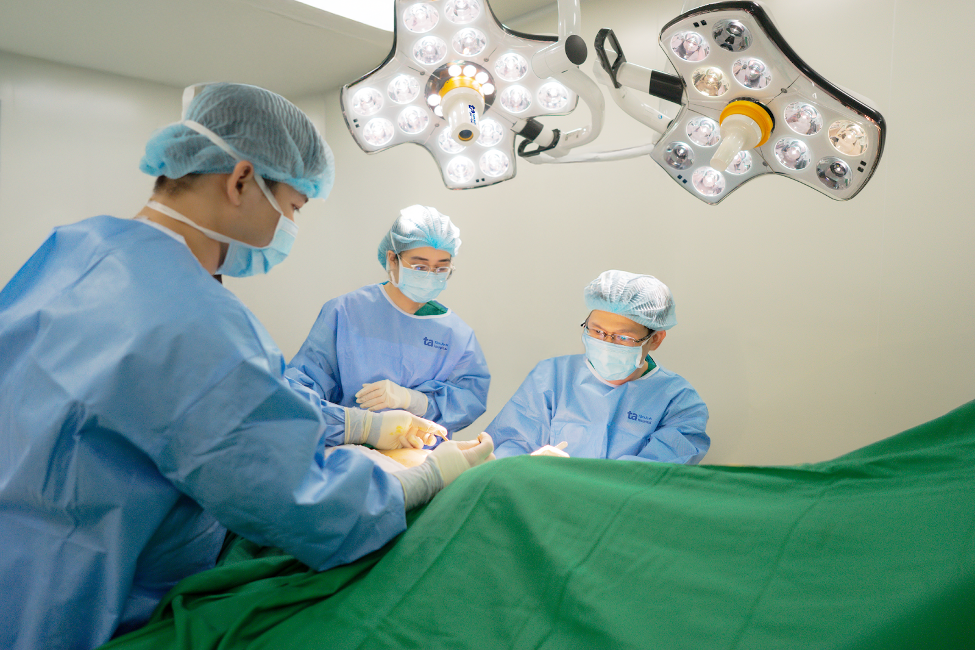Hanh was diagnosed with breast cancer in 2023 and underwent a left mastectomy and radiation therapy. Late last year, doctors attempted to reconstruct her breast using fat grafting, but the procedure was unsuccessful because the transferred fat tissue from her abdomen couldn't survive in the breast area.
Hanh returned to Vietnam and consulted Dr. Huynh Ba Tan at Tam Anh General Hospital in Ho Chi Minh City. After confirming that Hanh was cancer-free, Dr. Tan recommended breast reconstruction using a latissimus dorsi flap combined with an implant. This involved transferring a flap of skin and muscle from her back to the chest and placing a breast implant underneath. A smaller implant was also placed in her other breast to achieve symmetry and the desired volume.
Both procedures were performed during the same operation. Due to previous radiation therapy, Hanh's chest skin was thin and scarred, requiring careful removal of the damaged tissue. Because Hanh was thin, the excess skin on her back intended for breast reconstruction was limited. Dr. Tan had to carefully calculate the amount of skin to cover the implant adequately without creating a defect on her back that was too large to close.
A week after the surgery, Hanh's breast had healed and looked natural.
 |
The surgical team performing Hanh's breast reconstruction. Photo: Thanh Luan |
The surgical team performing Hanh's breast reconstruction. Photo: Thanh Luan
Dr. Tan explained that breast reconstruction is a complex procedure typically performed by both an oncologic and a plastic surgeon either at the time of mastectomy (immediate reconstruction) or after treatment is completed (delayed reconstruction), as in Hanh's case. Immediate reconstruction often yields better cosmetic results, especially after skin-sparing mastectomies, as it preserves the original breast shape. However, delayed reconstruction offers advantages such as higher patient satisfaction. After living with a single breast for a period, patients are often more accepting of a new breast, even if it's not perfect.
Breast reconstruction surgery is commonly recommended after mastectomies due to cancer, trauma, or aging. It helps patients overcome feelings of self-consciousness and improves body image. However, there are potential risks such as infection, vascular complications, hernia, fluid accumulation, and flap necrosis. Patients should choose reputable medical facilities to minimize these risks and maximize treatment effectiveness.
Minh Tam
*The patient's name has been changed.
| Readers can submit questions about cancer here for doctors to answer. |












